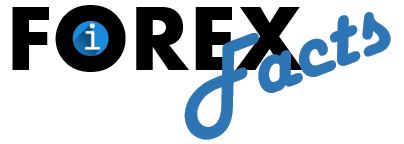Forex Facts through Time
Currency trading is by no means a new idea, the first evidence of exchange occurred in ancient times. There were people known as ‘Money-changing people’, living in the times of the Talmudic writings (Biblical times) that were known for helping others to change money, taking a commission or fee for themselves. These people used city-stalls primarily, or the temples Court of the Gentiles at feast times.
During the fourth century the Byzantine government controlled a firm monopoly on the exchange of currency.
The world’s first real ‘bank’ was Monte Dei Paschi di Siena founded in 1472 in Tuscany, Italy, and is still in operation today.
The Medici family in the 15th Century, with the need to exchange currencies in order to act for textile merchants, were required to open banks at foreign locations. The bank created the ‘nostro’ account book – which taken from Italian means ‘ours’ – to facilitate trade. This account book showed amounts of foreign and local currencies in relation to the keeping of an account with a foreign bank.
During the 17th and 18th centuries, Amsterdam maintained an active Forex market. Exchange took place between agents and merchants acting in the interest of their respective nations, England and Holland.
In the USA, the firm Alexander Brown & Sons traded foreign currencies in and around 1850 where they were seen as a leading participant. Of the other pioneers of Forex in the USA, J.M. do Espírito Santo de Silva was given permission in the 1880s to begin to engage in the business of foreign exchange trading.
Between 1899 to 1913 foreign exchange holdings increased by 10.8%, while holdings of gold increased only by 6.3% which was symbolic of the importance of the emerging Forex market.
In 1902 there was a grand total of two London foreign exchange brokers.
By 1913, almost half of global foreign exchange was performed using the pound sterling. This was very influential on the changing shape of the UK capital, where the number of foreign banks operating in London increased to 71 by 1913 from a total of 3 in 1860.
While the Sterling was dominant in Forex trade, Britain itself was really not in the first few years of the 20th Century. The most active trading centres were Paris, New York and Berlin. London and essentially wider Britain, was relatively quiet in respect of trade until 1914.
Until the US Federal Reserve was created in 1908, individual US banks could create their own money.
During the 1920s foreign exchange, certain families started to emerge as leading figures. The Kleinwort family became respected market leaders and significant families such as the Japhets, S,Montagu & Co. and Seligmans started to take credit as major participants.
After WWII the Bretton Woods Accord was signed. This allowed for currencies to fluctuate within a range of 1% to the respective currencies par.
President Nixon is famously credited with ending the Bretton Woods Accord, as well as fixed rates of exchange. This eventually led to a ‘free-floating’ currency system. Adam Smith would be so proud
The Forex markets, surprisingly, were forced to close sometime during 1972 and March 1973 due to the ineffectiveness of the Bretton Woods Accord and the European Joint Float. Can you imagine this happening today?
the year 1973 marks the point at which the modern Forex market essentially began. This is the year where the restrictive bind of nation-state, banking trade and controlled foreign exchange ended and complete floating of market began.
Reuters introduced computer monitors in June 1973, replacing the antiquated methods of telephones and telex that had previously been the chosen technology for obtaining trading quotes.
Back in the mid-1990s, the Forex market was exclusive to banks and corporations that could pull together over $40 to $50 million minimum in liquidity. It was only with the arrival of the Internet and development of electronic, online platforms that the market was opened up to the wider audience of retail traders.
Since the introduction of the Internet, the vast majority of all retail currency exchange happens online rather than on exchange floors. This allows for the market to be accessible to anyone in the world, regardless of location, as long as you have an internet connection.
Auto trading began in the Chicago mercantile exchange as early as the 1970’s but became common with retail trading around 1999 when online retail platforms started appearing.
With the introduction of Metatrader in the early 00’s, retail forex evolved once more, providing the ability for traders to write their own Expert Advisers and signals in an open platform.
In 2008, Zimbabwe experienced the worst inflation of currency in history of 6.5 sextillion percent. Not a good day for trading the ZWD.
Vivatox Forex Broker Review: What Traders Need to Know About Their Services
In the competitive world of forex trading, brokers need to offer more than just competitiv…














